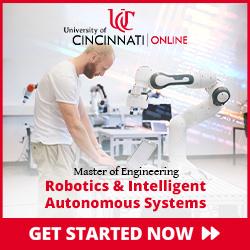Velodyne LiDAR, Leader in Autonomous Vehicle Technology, To Be Featured in Back-to-Back Events in S.F. Bay Area
CEO David Hall Joins Panelists During Robotics Conference at UC Berkeley July 13; At AUVSI Symposium Near SFO, Velodyne Team to Demonstrate LiDAR Vehicle
Morgan Hill, Calif. July 09, 2014
For those in the San Francisco Bay Area whod like to take a crash course in autonomous vehicle technology, July looks to be an ideal month. Attesting to the lure of self-driving cars and the companys pivotal role in this emerging sector, Velodyne LiDAR (http://www.velodynelidar.com) will be active on both sides of the Bay in mid-July.
Up first is the 2014 Robotics: Science and Systems Conference at U.C. Berkeley, which will bring together researchers working on mathematical foundations of robotics, robotics applications, and analysis of robotic systems. On Sunday, July 13, from 8:40-10:00 a.m. in Berkeleys Wheeler Hall, Velodyne founder and CEO David Hall will join a high-level panel to discuss Velodyne's LiDAR (Light Detection and Ranging) solutions, how they came about and where theyre headed: http://www.roboticsconference.org/registration.html.
Two days later, at the Hyatt Regency San Francisco Airport, AUVSIs Automated Vehicle Symposium (AVS) kicks off (http://www.automatedvehiclessymposium.org/home). During the events three-day run, Velodyne's LiDAR division demonstrate what its like to look through the "eyes" of a self-driving car, thanks to its HDL-64E 3D, real-time LiDAR sensor. The HDL-64E is mounted atop Velodynes white Lexus LiDAR demo vehicle, in much the same manner as Googles self-driving car. Indoors, Velodynes demo table will showcase the advantages of its compact, lightweight, real-time HDL-32E 3D sensor, which is also popular with UAV enthusiasts.
From Berkeley to Burlingame
Joining Velodynes Hall on the "Technology and Systems" panel on the Berkeley campus: Paul Newman, University of Oxford; Jesse Levinson, Stanford University; and Philipp Robbel, Robert Bosch LLC, Research and Technology Center, Palo Alto. The workshop will explore the fast-changing topic of self-driving vehicles, from the perspectives of robotics research and policy, and solicit contributions in the core technologies of mobile robotics that underpin self-driving vehicles, including: sensors, localization, mapping, path-planning and control, and human-machine interfaces.
If autonomous vehicles are ever to take to the road en masse, theyll need to be able to pass a vision test. At AVS, thats where Velodynes LiDAR technology will come in - and no one does 3D, real-time LiDAR better than Velodyne. With a continuous 360-degree sweep of its environment, the sensor captures data at a rate of 1.3 million points per second, within a range of 100 meters. On a 40-inch TV display, discerning viewers at AVS will be able to spot people criss-crossing in front of the vehicle and other cars moving around the Velodyne Lexus, precisely the sort of data capture that translates to object recognition and collision avoidance. In keeping with Velodyne's involvement with both sight and sound, the LiDAR demo vehicle will be outfitted with high-end Velodyne headphones, and the company will raffle off a pair during the event.
"We are very excited to show off our technology at these two events so close to home," said Wolfgang Juchmann, Director of Sales & Marketing, Velodyne LiDAR division. "Were recognized worldwide for developing high-definition LiDAR sensors for autonomous vehicle applications, including 3D mapping and surveying. Our real-time HDL 3D LiDAR sensor family is the sensor for assisted or autonomous driving throughout the world. The Silicon Valley is just the perfect place for such kind of innovation, and it is not by coincidence that almost all of our automotive customers have R&D offices on the San Francisco peninsula." Velodynes sensor is used by virtually every car manufacturer and tier 1 supplier in the business, as well as a few players outside the established car business, like Google, with the latest iteration of its self-driving car - one that has neither a steering wheel nor a gas pedal.
About Velodyne LiDAR
Founded in 1983 and based in Californias Silicon Valley, Velodyne Acoustics, Inc. is a diversified technology company known worldwide for its high-performance audio equipment and real-time LiDAR sensors. The companys LiDAR division evolved after founder and inventor David Hall competed in the 2004-05 DARPA Grand Challenge using stereovision technology. Based on his experience during this challenge, Hall recognized the limitations of stereovision and developed the HDL64 high-resolution LiDAR sensor. More recently, Velodyne has released its smaller, lightweight HDL 32E sensor, available for many applications including UAVs. Since 2007, Velodynes LiDAR division has emerged as a leading developer, manufacturer and supplier of real-time LiDAR sensor technology used in a variety of commercial applications including autonomous vehicles, vehicle safety systems, 3D mobile mapping, 3D aerial mapping and security. For more information, visit http://www.velodynelidar.com.
Featured Product

Online Master of Engineering in Robotics & Intelligent Autonomous Systems
The Robotics and Intelligent Autonomous Systems program at the University of Cincinnati Online offers a cutting-edge curriculum that equips students with the skills to design, develop, and implement advanced robotic systems. Through a combination of theoretical knowledge and top-ranked faculty, students gain expertise in artificial intelligence, machine learning, and robotics, preparing them for impactful careers in the rapidly evolving field of autonomous systems. Explore now!
